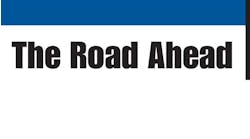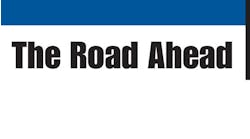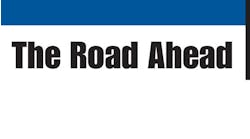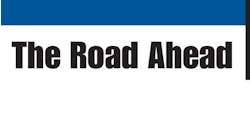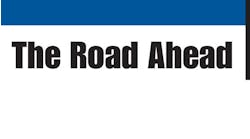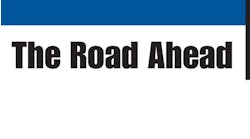BOTH fleets and parts distributors may have inventory challenges as a result of the new stopping-distance regulations, according to Bill Rayball, eastern area manager for Federal-Mogul Corp.
FMVSS 121 requires new air-braked tractors to meet a 20-30% reduction in the current 355' stopping-distance requirement — under all load and system conditions — by May. The targeted reductions can be achieved with air disc or higher-performing drum brakes. Not included in FMVSS 121 are air-braked trucks, buses and trailers, hydraulic-braked vehicles, and retrofits of existing vehicles in service.
Rayball was part of a Heavy Duty Aftermarket Week panel that also included: Randy Petresh, vice-president of technical services for Haldex Brake Products Corp; Paul Johnston, senior director of braking products for Meritor WABCO; and Richard Diemer, director of OEM sales for BrakePro Limited.
Rayball's other drum-brake conclusions:
-
Fleets may experience longer-lasting brakes due to the advantages of wide brake configurations.
-
The public may experience safer highways as a byproduct of improved stopping performance.
His estimate for the impact on fleets:
-
Brake balance issues between truck and trailer (trailer brake unchanged).
-
The wide brake package may cost more than the current standard brake configuration.
-
More Friction Materials Standards Institute (FMSI) recommended practices during the transition to a wide brake.
-
Fleets will have to stock multiple brake drums for both steer- and drive-axle applications depending on brake size, axle, and hub configuration.
His estimate on the impact on distributors/reliners:
-
Additional parts numbers required to service fleets.
-
Shift on FMSI recommended practices used as new brake system gains in market share.
-
Cores usage will change along with the FMSI shift.
-
Similar impact on the brake drums' parts number mix.
-
Potential decline in brake business due to longer-life brakes.
Choices available
He said the choices for truck OEs and fleets include possible new drum-brake configurations to meet the new regulation: standard drum steer and drive; large/wide drum steer and standard drum drive; or large/wide drum steer and wide drum drive.
He said the large/wide drum steer and standard drum drive — with 16.5×5 front and 16.5×7 rear — will provide a stopping distance of 250'.
“A higher friction material may be required,” he said. “The steer axle will take on more of the braking responsibility. It may result in increased maintenance cost and potential compatibility issues.”
He said the large/wide drum steer and wide drum drive — with 16.5×5 front and 16.5×8.63 rear — will provide a stopping distance of 211'.
“There will be an increase in cost over standard brakes,” he said, “and also better lining/drum wear due to lower brake operating temperatures. There will be no change in maintenance practices to service the brake system.”
Petresh said the implementation of the final rule will not have any effect on the five disc brake models in service today: Bendix/Dana, Bendix SB/SN Series, Haldex ModulX, Meritor WABCO EX225, and Meritor WABCO PAN22.
“All of these disc brakes were designed and developed several years ago with the objective of providing a higher level of performance over current drum brakes,” he said. “So from a performance perspective, all of these disc brakes will easily comply.”
He said that from a service/parts perspective, the disc brake components that will require periodic routine replacement are: pads/springs, rotors, slide pins/bushings, and chambers.
“The disc brake pads are made from a semi-metallic friction material, as opposed to the current organic-based material, and are integrally molded or metallurgically bonded to the shoe plate,” he said. “Shoe plates cannot be relined or reused.
“A friction material specification is developed for each disc brake model. Friction material substitution is not permitted. Pads are not interchangeable. Pad retention springs should be changed when pads are replaced.”
Diemer said the new regulation will initially impact only new truck tractors, which is roughly 10% of the population. The other 90% is a mix of truck tractors with various levels of brake maintenance.
“Fleets and their suppliers must not only address the maintenance of the brake, but the quality of replacement components is as critical as ever,” he said.
“The upcoming stopping-distance reduction has brought more attention to commercial vehicle brakes. Real-world liabilities exist for distributors and fleets using unsafe or inferior linings. There are no laws governing aftermarket lining quality or compliance for the intended application.”
He said an FMVSS 121 dynamometer certification has been the minimal level of performance used by North American friction suppliers and brake manufacturers for aftermarket linings for many years.
“The industry has for years, to an extent, been self-policing,” he said. “Testing the competition is nothing new. The issue is not country of origin, but that the proliferation of new heavy-duty lining suppliers has brought the need for proof of compliance for distributors and fleets.”
He said the FMVSS 121 dynamometer test consists of a hot and cold burnish, and four performance tests: retardation measurement at varying brake pressures; brake power/fade measurement at varying brake temperatures; hot stop/panic stop simulation; and friction performance recovery measurement.
Diemer said the basic retardation measurement (cold stopping distance) is done at 10 psi intervals from 20 psi to 80 psi (the maximum on most trucks).
“The friction ratio on every stop must exceed the minimum requirement,” he said. “It should be relatively consistent over all pressures, as straight a line as possible.
This test measures friction sensitivity to the brake pressures applied.”
He said brake power test (commonly known as FADE) measures the increase in brake pressure as the brake gets hotter (150°F to 450°F is typical). It consists of 10 snubs of 50 mph to 15 mph over 12 minutes with no cooling. FMVSS 121 requires that the maximum brake pressure during all 10 snubs must not exceed 100 psi.
The hot stop test simulates an emergency “panic stop” with a hot brake from only 20 mph, he said. Although there is no pass/fail criteria, it must be run prior to the last portion known as recovery.
The recovery test measures the ability of the friction material to return to its original stopping characteristics after exposure to high temperatures, he said.
FMVSS 121 requires the braking pressure to be between 25-85 psi over 20 consecutive cooling 30-mph-to-0-mph stops.
Above 85 psi indicates the loss of friction or stopping power. Below 25 psi indicates that the material composition has changed, leading to more aggressive recovery.
“Conventional wisdom is that ‘you get what you pay for’ in friction material, especially with respect to service wear life,” he said. “This may not always be true, but when testing these materials, the lower cost-compliant materials offered less service life. Unfortunately, low cost helps these products into the market, but the net result for a fleet operator is often an increased actual overall cost, accompanied by a significant increase in vehicle downtime.
“What can a fleet/distributor do? Know your friction supplier. Ask for supporting dynamometer data. Buy OEM-branded or OEM lining. Use TMC's RP628 lining-qualification list.
“There has been more proliferation of friction materials in recent years. The way distributors and fleets choose their replacement components, especially safety-related products, is more critical. As an industry, and with government help, we need to give them the tools to make these decisions. We must address the needs of the majority of the trucks on the road, the 80% to 90% that are not fresh off-the-line incorporating new technology.”
